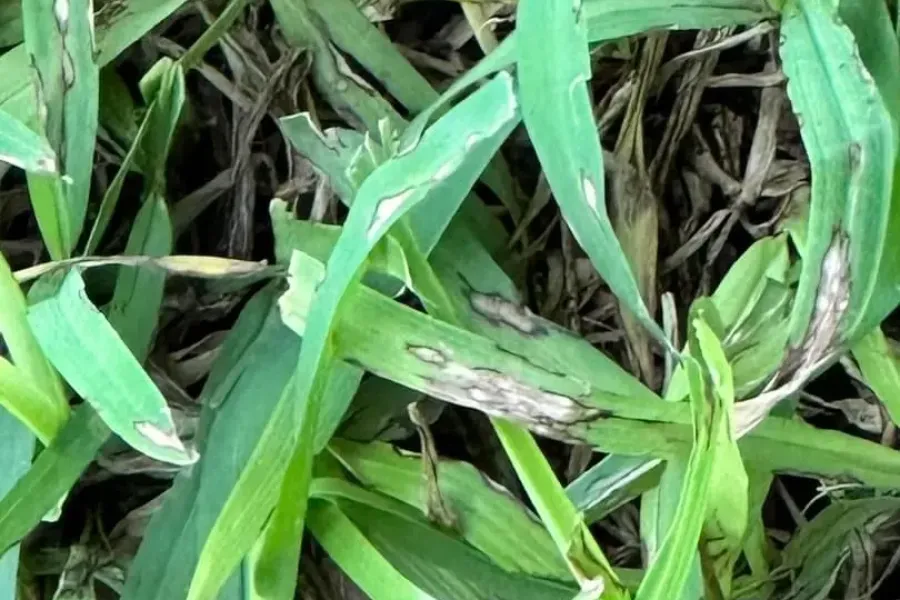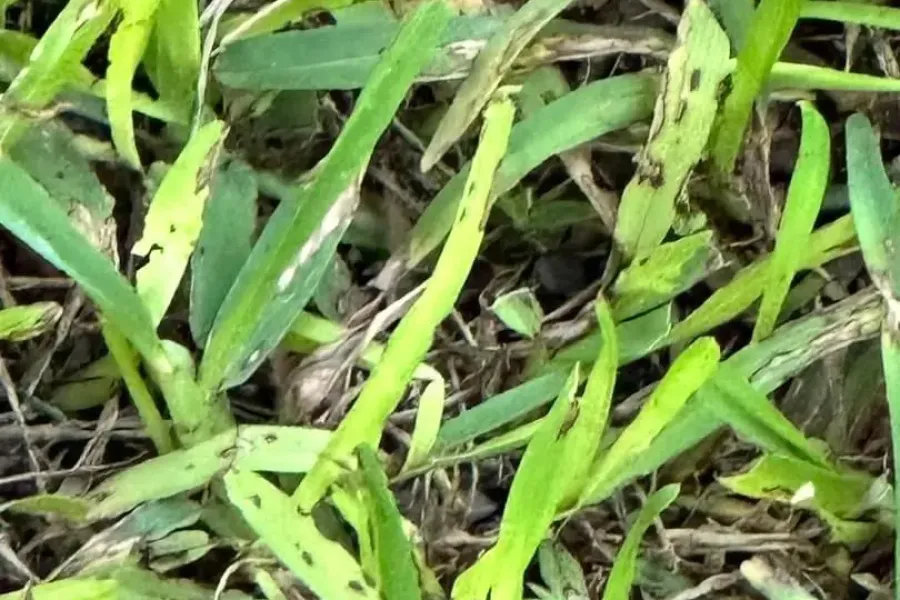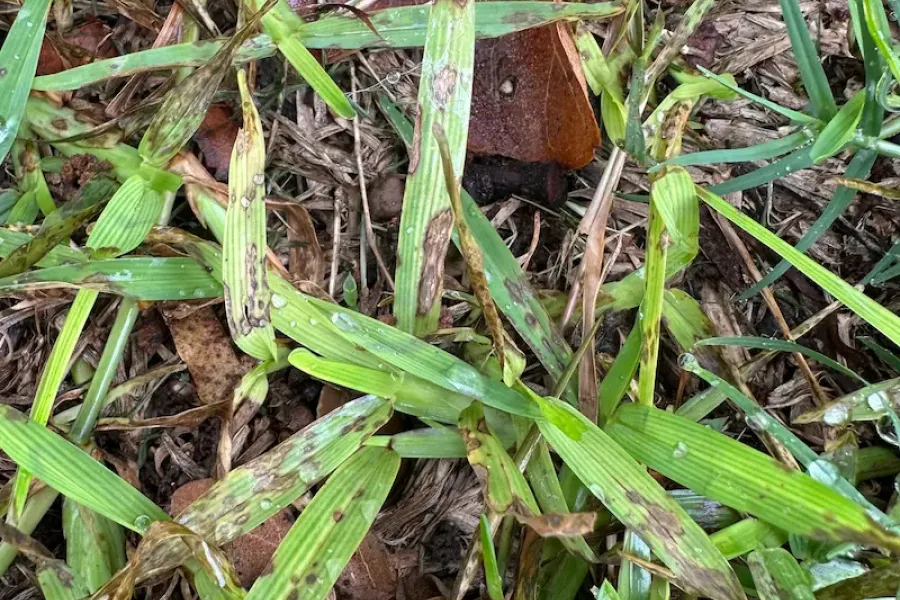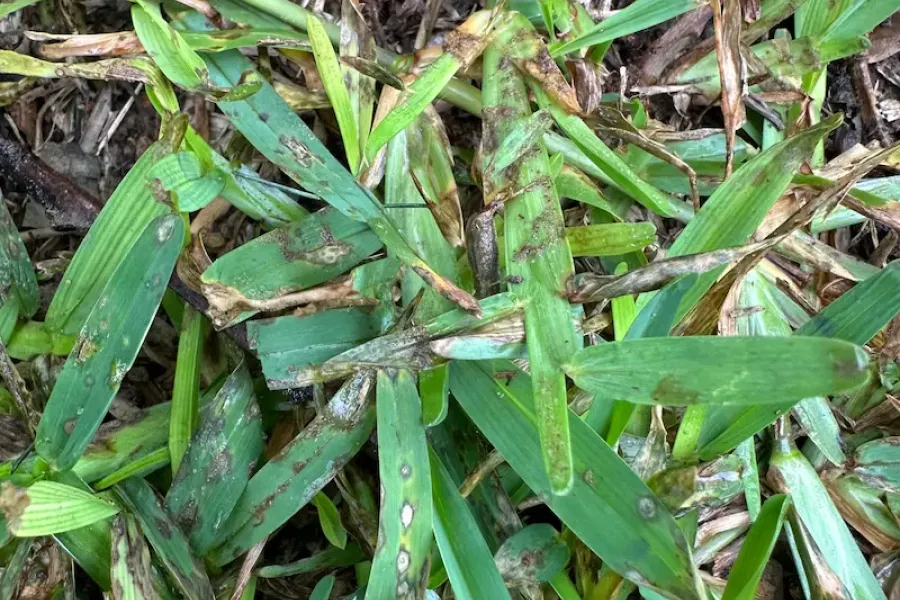Controlling Gray Leaf Spot in St. Augustine Lawns – Fort Worth, Arlington & Colleyville, TX
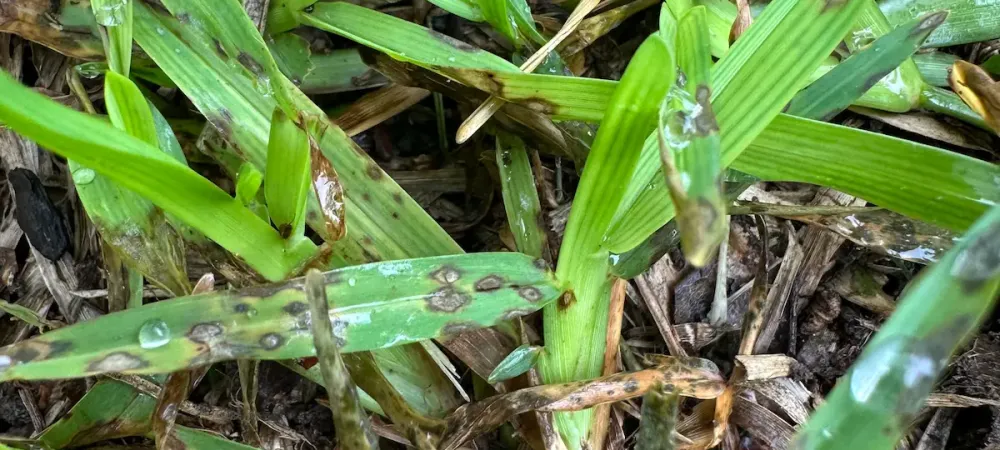
If you live in Fort Worth, Arlington, or Colleyville and have a St. Augustine lawn, chances are you’ve seen Gray Leaf Spot (GLS) during the summer. This disease is very common in North Texas, especially in lawns that are watered frequently.
GLS isn’t just a cosmetic issue—it’s a signal that the lawn may be staying too wet or receiving too much fertilizer. The good news is that with the right adjustments, it can be kept under control.
What Gray Leaf Spot Looks Like
Gray Leaf Spot is a fungal disease caused by Pyricularia grisea. In St. Augustine grass, it typically shows up as:
- Gray or tan lesions with darker brown edges, sometimes giving a scorched appearance
- Thinning turf in severe cases
- A moisture signal—GLS almost always means water is sitting on the grass too long
At certain times of year, nearly every St. Augustine lawn in North Texas that receives regular irrigation will have at least some GLS present.
Fertilizer and Nitrogen
A common mistake when GLS appears is cutting fertilizer off completely. While too much nitrogen—especially quick-release—can make GLS worse, eliminating nitrogen altogether will starve the grass.
The best approach is a balanced one: use moderate to low amounts of nitrogen with a slow-release product. This feeds the lawn steadily without pushing the kind of soft, disease-prone growth that GLS thrives on.
Why GLS Is So Common in Fort Worth, Arlington & Colleyville
North Texas provides the perfect conditions for this disease:
- Frequent or nighttime watering with automatic sprinklers
- Hot, humid weather (80–90°F)
- Shady lawns with poor airflow
- Newly sodded or sprigged lawns that are not fully established
Tips for Controlling Gray Leaf Spot
Before reaching for fungicides, focus on cultural practices that make the biggest difference:
- Water correctly – Deep, infrequent watering is better than daily watering. Always water early in the morning so the grass dries quickly.
- Fertilize wisely – Use moderate nitrogen and stick to slow-release products.
- Mow properly – Keep mower blades sharp and mow St. Augustine at 2.5–3.5 inches.
- Improve airflow – Trim back trees and shrubs so air and sunlight can reach the turf.
- Use fungicides only if needed – For severe cases, products with azoxystrobin, propiconazole, or thiophanate-methyl are effective. Rotate products if multiple applications are necessary to prevent resistance.
Why It Matters
GLS typically will not kill St. Augustine grass, but it does weaken it. Once stressed, lawns become more vulnerable to bigger problems such as Take-All Root Rot or Brown Patch later in the season.
By managing watering, mowing, and fertilization, GLS can be kept at background levels where it won’t take over.
Bottom Line
Every St. Augustine lawn in Fort Worth, Arlington, and Colleyville is likely to show some Gray Leaf Spot during the summer. The goal isn’t to eliminate GLS entirely—it’s to keep it under control.
- Don’t quit fertilizing altogether.
- Don’t water daily or at night.
- Do use moderate, slow-release nitrogen.
- Do water early so the lawn dries out.
With the right adjustments, St. Augustine lawns can stay healthy and resilient throughout the year

